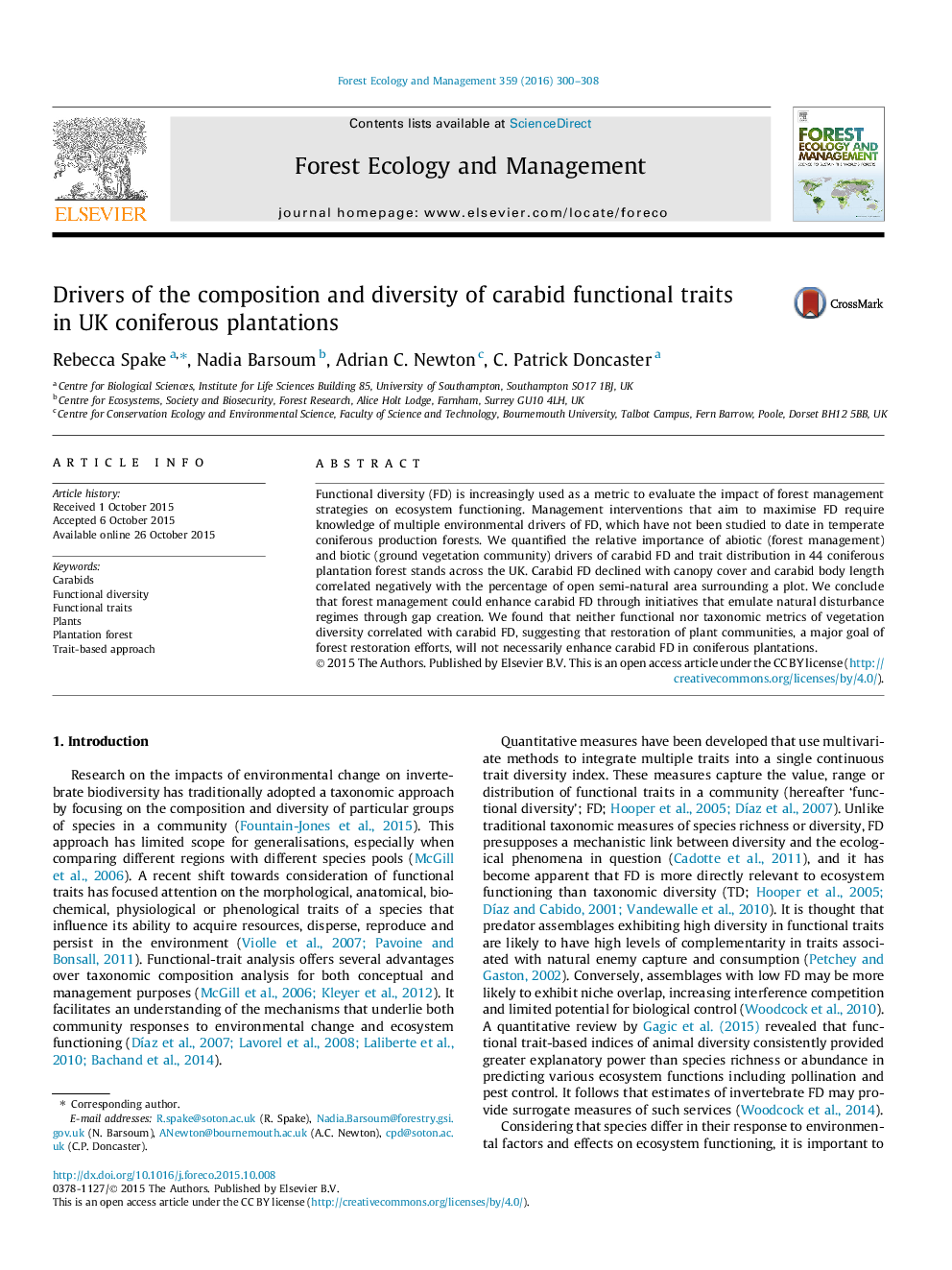| Article ID | Journal | Published Year | Pages | File Type |
|---|---|---|---|---|
| 6542683 | Forest Ecology and Management | 2016 | 9 Pages |
Abstract
Functional diversity (FD) is increasingly used as a metric to evaluate the impact of forest management strategies on ecosystem functioning. Management interventions that aim to maximise FD require knowledge of multiple environmental drivers of FD, which have not been studied to date in temperate coniferous production forests. We quantified the relative importance of abiotic (forest management) and biotic (ground vegetation community) drivers of carabid FD and trait distribution in 44 coniferous plantation forest stands across the UK. Carabid FD declined with canopy cover and carabid body length correlated negatively with the percentage of open semi-natural area surrounding a plot. We conclude that forest management could enhance carabid FD through initiatives that emulate natural disturbance regimes through gap creation. We found that neither functional nor taxonomic metrics of vegetation diversity correlated with carabid FD, suggesting that restoration of plant communities, a major goal of forest restoration efforts, will not necessarily enhance carabid FD in coniferous plantations.
Related Topics
Life Sciences
Agricultural and Biological Sciences
Ecology, Evolution, Behavior and Systematics
Authors
Rebecca Spake, Nadia Barsoum, Adrian C. Newton, C. Patrick Doncaster,
